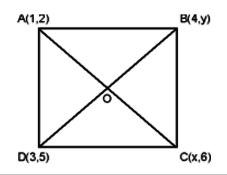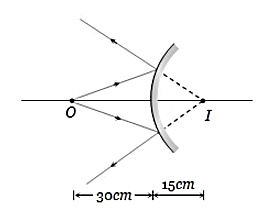11th And 12th > Physics
RAY OPTICS CURVED MIRRORS MCQs
Total Questions : 30
| Page 1 of 3 pages
Answer: Option C. ->
Concave mirror
:
C
:
C
Plane mirror and convex mirror always forms erect images. Image formed by
concave mirror may be erect or inverted depending on position of object.
Answer: Option B. ->
can be considered approximately parallel.
:
B
Nope, sunrays are not exactly parallel. And no, we don't just randomly assume it to make problems and life easy! Rather, it is a good approximation to consider sunrays to be parallel when they reach us, as the sun is really really far (149.6 million km!) from the Earth, hence the angle between the rays are very very small. Go watch the video again to realize this.
:
B
Nope, sunrays are not exactly parallel. And no, we don't just randomly assume it to make problems and life easy! Rather, it is a good approximation to consider sunrays to be parallel when they reach us, as the sun is really really far (149.6 million km!) from the Earth, hence the angle between the rays are very very small. Go watch the video again to realize this.
Answer: Option A. ->
Is plane
:
A
Lets first of all think about the situation given to us. Two parallel incident rays give us two parallel reflected rays. It means that at both the points the normal must be parallel, only then this is possible. (Think from the point of view of the law of reflection followed by both the rays.)
Now, we know that, for a spherical mirror, the normal at any point passes through the center of curvature. So, if all the normals pass through a point, they are not parallel.
So, we can only have parallel normal in the case of a plane mirror. So our mirror here is a plane mirror.

:
A
Lets first of all think about the situation given to us. Two parallel incident rays give us two parallel reflected rays. It means that at both the points the normal must be parallel, only then this is possible. (Think from the point of view of the law of reflection followed by both the rays.)
Now, we know that, for a spherical mirror, the normal at any point passes through the center of curvature. So, if all the normals pass through a point, they are not parallel.
So, we can only have parallel normal in the case of a plane mirror. So our mirror here is a plane mirror.

Answer: Option D. ->
appear to intersect behind the reflecting surface.
:
D
Remember, as a rule of thumb, that if parallel rays after falling on any kind of reflecting surface get diverged, they can never actually intersect! And this is what happens in a convex mirror, it is a diverging mirror. So, parallel rays will never meet after getting reflected, but, when extended backwards they will appear to meet behind the mirror, you shall see in later modules that this how they from virtual image.

:
D
Remember, as a rule of thumb, that if parallel rays after falling on any kind of reflecting surface get diverged, they can never actually intersect! And this is what happens in a convex mirror, it is a diverging mirror. So, parallel rays will never meet after getting reflected, but, when extended backwards they will appear to meet behind the mirror, you shall see in later modules that this how they from virtual image.

Answer: Option D. ->
Trick question! The focus is defined for a convex mirror as the point where the reflected rays appear to meet.
:
D
The design of a convex mirror is in such a way that parallel rays of light after reflection from the convex mirror, diverge. These rays do not converge at a point as in the case of a concave mirror. But if we extrapolate the reflected rays, we can say they appear to meet at a point on the non-reflecting side of the mirror. We actually define this point as focus of a convex mirror.

:
D
The design of a convex mirror is in such a way that parallel rays of light after reflection from the convex mirror, diverge. These rays do not converge at a point as in the case of a concave mirror. But if we extrapolate the reflected rays, we can say they appear to meet at a point on the non-reflecting side of the mirror. We actually define this point as focus of a convex mirror.

Answer: Option A. ->

:
A
For a convex mirror, v=xf0x+f0 with f=+f0 and u=−x. We can easily conclude the
Following:
For any value of x, v is always positive and less than f0
As x→∞,v=f0
At x=f0,v=f02
As x→0,v=0

:
A
For a convex mirror, v=xf0x+f0 with f=+f0 and u=−x. We can easily conclude the
Following:
For any value of x, v is always positive and less than f0
As x→∞,v=f0
At x=f0,v=f02
As x→0,v=0
Answer: Option A. ->
Vi<V0 always
:
A
As object moves from infinity to pole of convex mirror, image moves from focus to pole. So, vi<v0 always
:
A
As object moves from infinity to pole of convex mirror, image moves from focus to pole. So, vi<v0 always
























